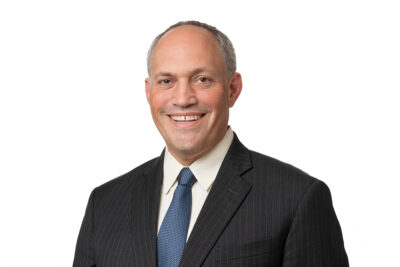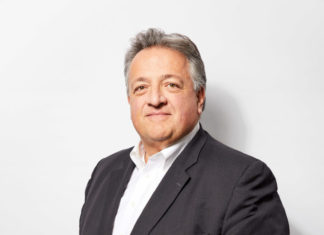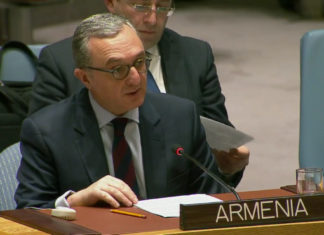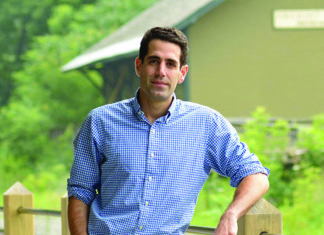Creative Philanthropy
By Edmond Y. Azadian
Armenians have been persecuted and have suffered tremendously over the centuries, often depending on charities from their own folk or from foreign charities and relief agencies that have carried most of the weight contributing to the survival of the nation.
There are different types of charitable people. All contributions certainly go a long way but contributions of a few go further because they have a creative spin to it.
There are philanthropists who contribute because some influential individuals convince them. Others observe the need and contribute spontaneously. Still others donate because their names will be perpetuated on a building.
But few benefactors combine major elements of philanthropy to have an impact on history. Most of the times, those are self-made types who have accumulated their wealth through their business acumen. They are participants in their own communities, those being in touch with the pulse of history. And the last component of philanthropy is the vision that will pull all the other aspects together.
We remember and revere many philanthropists for their valuable legacy but very few have cast their shadows over our history.
One such person may be considered Alexander Montachev, the oil magnate from Baku. His munificence covers many areas of Armenian life, culminating in the gift of Komitas to the Armenian people. Thanks to his support, Komitas was sent to Berlin to become an ethnomusicologist and helped define the course and identity of Armenian music.
Another philanthropist who was able to convert wealth into wisdom was Alex Manoogian, who, having lived and suffered with his own people, did not need any appeal or guidance to direct his charities. He would generate ideas and develop programs and fund them generously. More than one generation of educated Armenians enriched the diaspora life thanks to his education campaigns. He combined charity with wisdom and vision and that way he was elevated to the level of national leadership.
He casts a large shadow over the second half of the 20th century in the diaspora as well as in Armenia.
Having said that, of course, other stellar names in our philanthropic past are Nubar Pasha and Calouste Gulbenkian, who were able to help their people and their adopted communities with their foresight.
Technology, globalization and the development of demographic profiles challenged old forms of charity and thus philanthropists have had to keep pace with modern developments.
Ruben Vardanyan dashed into the realm of philanthropy with new ideas, innovative projects and global vision.
When the Armenians envy the success of Jewish people, they overlook one fundamental fact: Jews not only take care of their own people and contribute to their own charities, but they contribute to a host of causes. They even take leadership roles in philanthropy in contributing to causes not even remotely related to their ethnic, religious, social and political affiliations. In fact, often, from a young age, Jewish children are taught to tithe money to charity, a concept that has yet to take root in our community.
Mr. Vardanyan seems to pay enough attention to grasp that philanthropy can succeed when exercised in a global manner, in a globalized society.
The reason his initiative was instantly covered in the world press, beginning with the Economist in London, the New York Times and the press from all over the world is publicity value. From the start, he has enlisted into his projects world renowned figures such as Elie Wiesel, George Clooney and other statesmen and human rights activists.
Vardanyan had already made a name for himself by funding and establishing a multimillion-dollar, world-class international school in Dilijan, Armenia.
He has associated himself with fellow like-minded benefactors, namely Dr. Noubar Afeyan and Dr. Vartan Gregorian, who have joined him in co-founding the 100 Lives Project.
Next year, when George Clooney flies to Yerevan to award the first Aurora Prize for Awakening Humanity, the world press will follow him there. How much PR funds does one need to spend in order to focus world media attention on Armenia?
The concept behind the project is to note righteous people who helped Armenians in their time of need. Armenians, in turn, now can extend their gratitude to the rest of the world.
It is also interesting that the project is awarding 100 scholarships to students in Arab countries to enroll at the Dilijan School.
Armenians, with their knee-jerk antagonism to the Islamic faith of the Turks forget the welcome that the Genocide survivors enjoyed in Muslim Arab countries, where they also prospered. The scholarships to be awarded symbolize the gratitude that Armenians owe to the host Muslim countries.
On the eve of the Genocide centennial, this positive light is splashing across the world news media as a welcome development.
Judging from the interviews which Mr. Vardanyan has given thus far, he comes across as having an impressive command of the English language. But, more impressive is his knowledge of Armenian history. It is no wonder, since this grandfather taught history at Yerevan State University.
We use charity to overcome misery. But here a brighter aspect of philanthropy comes forth. Mr. Vardanyan states: “Yes, we should remember and honor the memory of the victims and the recognition of the Armenian Genocide by other countries, particularly by Turkey, is important for us, but our main message to the world is that we are alive and strong.”
The media fully covered the details of this enormous philanthropic endeavor and more details certainly will unfold during the coming months and year. We hope we are not jumping the gun by getting overly excited about the prospect.
The only wish that we may have would be for the lasting consequences of this illuminating drive.
We can only define this drive as a creative philanthropy whose aim is “learning from the past, delivering the present and shaping the future.”
Creative Philanthropy
Top 5 Articles
- Trending
- Most Viewed
- Most Commented
- US and European Aid Package to Armenia Is Not Only Cheap, It’s Dangerous
- Fresh Lavash and Armenian Delights at Gyumri in Watertown
- Recipe Corner: The Gutsy Gourmet’s Armenian Eech
- Major Ethiopian Exhibit Comes to Massachusetts Including Armenian Artifacts
- Key Takeaways from an Interview with US Ambassador Kvien
- US and European Aid Package to Armenia Is Not Only Cheap, It’s Dangerous
- Valerian Markarov: Writing Russian and Being Armenian in Georgia
- California Armenian Legislative Caucus Foundation Announces Scholarships in Remembrance of the Armenian Genocide
- Recipe Corner: Kohar Avakian’s Cherished Family Recipe for Tutum
- Recipe Corner: Zatiki Chorek: Armenian Easter Bread
- Why I Am Grateful to Erdogan, the Dictator of Turkey
- A Political Whirlwind Engulfs Nagorno Karabakh
- Libya’s Interim Government Recognizes the Armenian Genocide Once Again
- Robert Bedrosian Marries High Tech With Ancient Armenian Manuscripts
- Aleppo Aid through St. Kevork Armenian Apostolic Church of Houston








